Japan, a country with an ancient culture and countless traditions, is home to many festivals celebrated year-round. Among them, Onbashira stands out as one of the most unique and spectacular, a tradition that has been held for more than 1,200 years around Lake Suwa in Nagano Prefecture. The purpose of the festival is to symbolically renew the sacred Suwa Taisha Shrine.
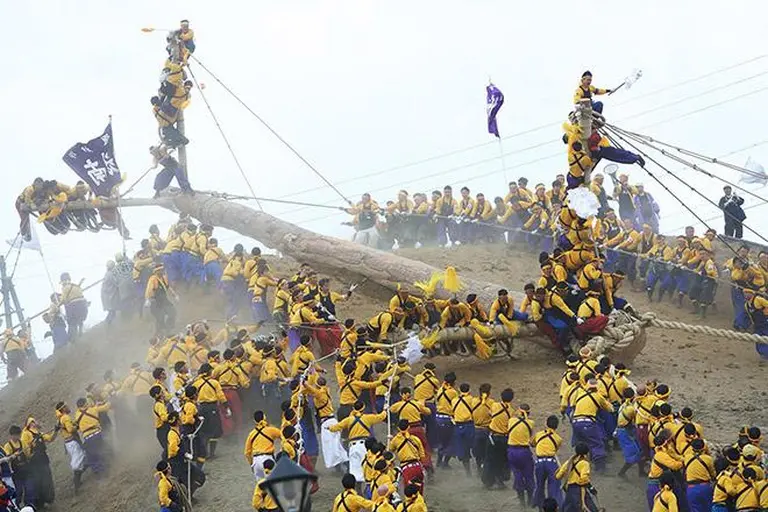
>> A closer look at Japan’s most bizarre “Naked” festival
Held once every six years, during the years of the Tiger and Monkey in the zodiac calendar, the Onbashira Festival is regarded as an intangible cultural treasure of Nagano. It is a deeply important event for the local community, organized mainly by the followers of Suwa Taisha, many of whom are residents of Suwa.
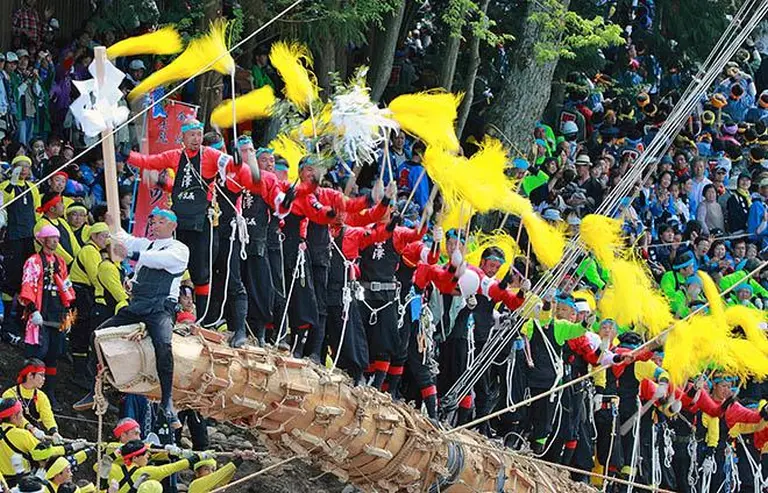
The shrine itself consists of four main halls, each requiring four massive sacred pillars at its corners. To prepare for the festival, huge trees are carefully selected and felled from the mountains to serve as these new shrine pillars, called Onbashira.
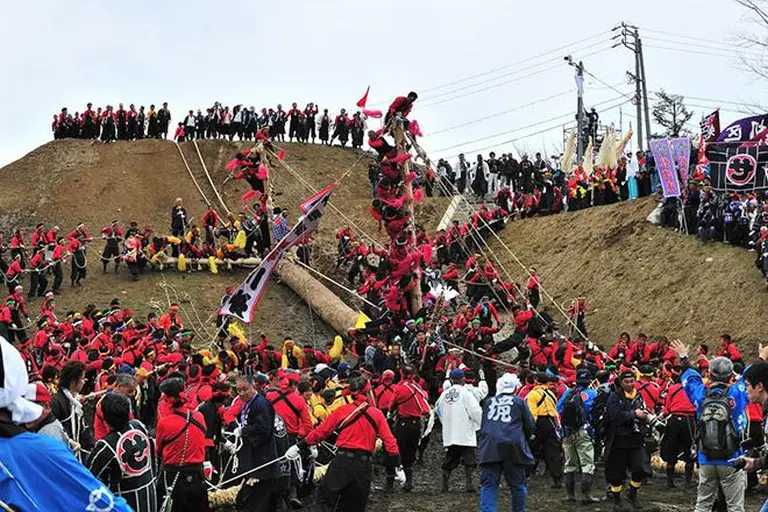
The festival lasts for nearly two months, from early April to mid-May, and is divided into two main rituals: Yamadashi (bringing the logs down from the mountains) and Satobiki (erecting the pillars at the shrine).

>> What’s inside Japan’s most famous love hotels?
During Yamadashi, the most dramatic part of the event, the 16 chosen logs—each up to 16 meters long, one meter in diameter, and weighing around 12 tons—are cut from Mount Okoya and hauled down treacherous slopes. In scenes that both thrill and terrify onlookers, young men in traditional attire actually ride on top of the logs as they hurtle down steep mountain paths, without any safety equipment. This daring spectacle has become the highlight of the festival, attracting thousands of participants and spectators alike.
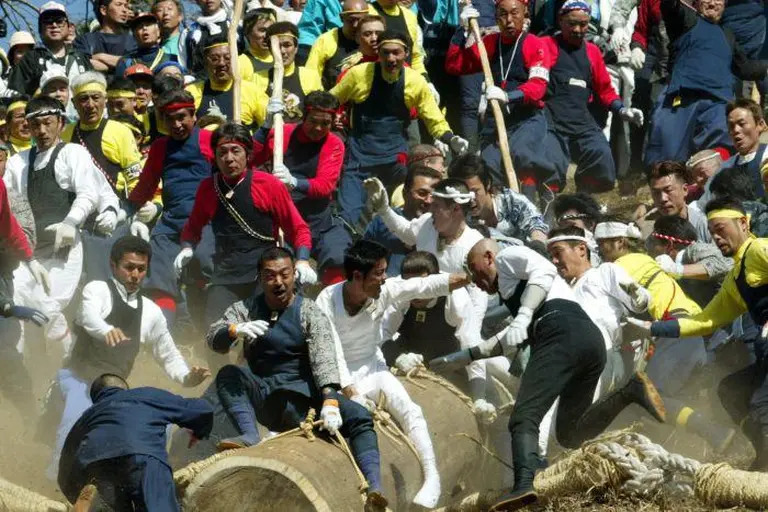
The act is not without risk. Participants must navigate steep descents, sharp turns, and even cross icy rivers while clinging to the enormous logs. Many see it as a test of courage, embodying the spirit of the samurai and placing their trust in the protection of the gods. The atmosphere is filled with traditional chants and songs as the logs are slowly dragged, pushed, and guided toward the shrine—a journey of about 10 kilometers that takes three days.

After resting for nearly a month, the second stage, Satobiki, begins in early May. This involves carving and raising the giant logs to become the new pillars of Suwa Taisha. With the help of thick ropes, groups of strong men gradually pull the logs upright—about 16 meters tall—until they are firmly planted in the ground at each corner of the shrine.
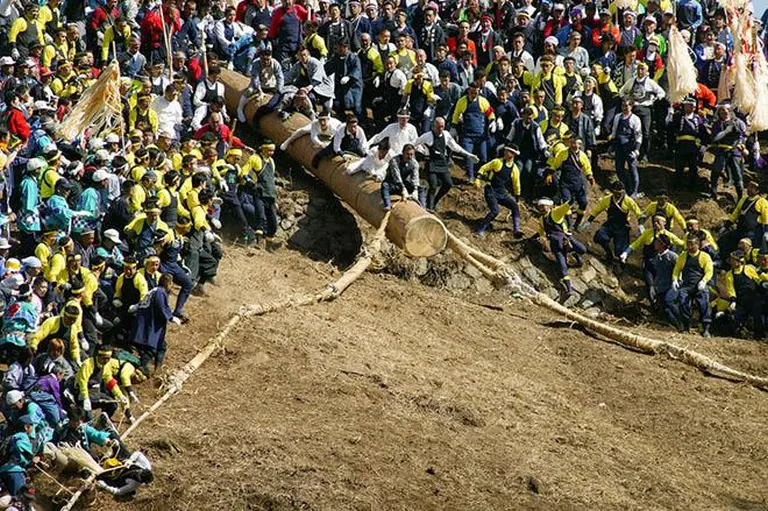
>> Extremely bizarre things found only in Japan that leave tourists astonished
Once completed, the shrine is believed to be spiritually renewed. The Tate Onbashira ceremony marks the grand finale of the festival, closing weeks of preparation, rituals, and incredible feats of bravery.
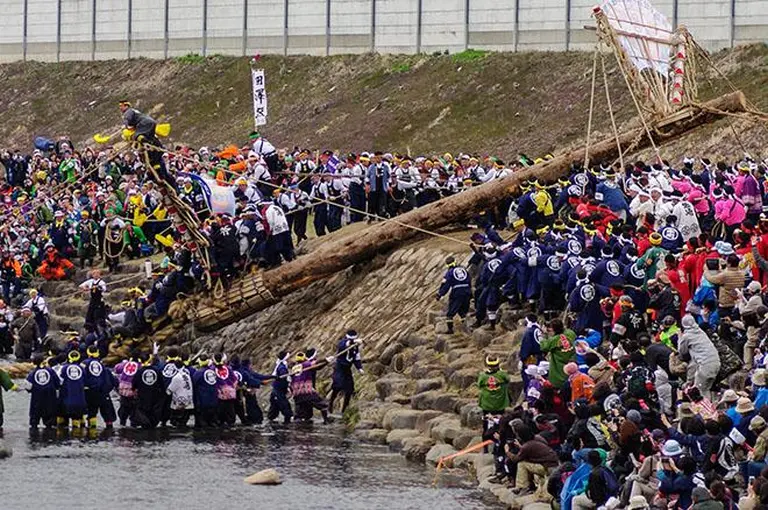
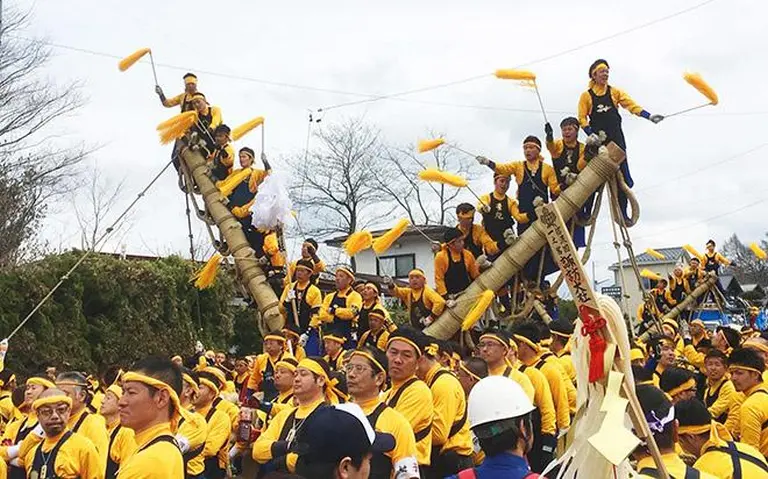
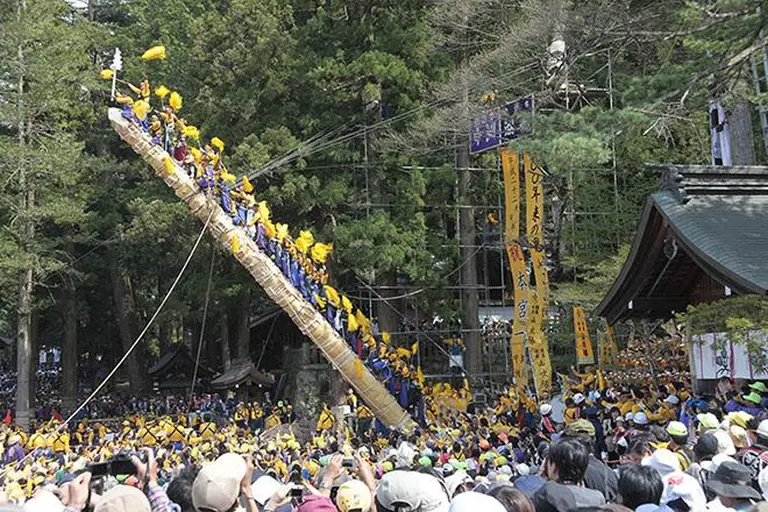
>> Unique things in Japan that surprise first-time visitors
For visitors, the Onbashira Festival offers a rare chance to witness one of Japan’s most daring and time-honored traditions. While it is thrilling to watch the massive logs being hauled and ridden down the slopes, the festival also carries significant cultural and spiritual meaning for the local community. Travelers can enjoy the vibrant atmosphere as spectators, but due to the high level of risk involved, participation in the log-riding events is generally reserved for locals. Whether you come for the history, the rituals, or simply the spectacle, Onbashira remains an unforgettable experience that reflects both the bravery and devotion of the Japanese spirit.






